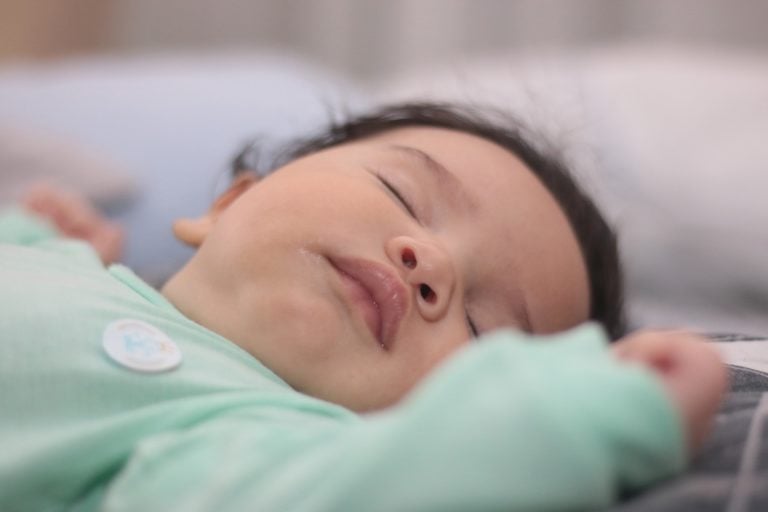Consequences of Plagiocephaly
Plagiocephaly is a disorder in which there is a flattening on one side of the skull.
This can occur because of the constant support of the same area when sleeping or resting. Many parents wonder what the consequences of plagiocephaly are.
How do I know if my baby has plagiocephaly?
The flat head syndrome is often due to torticollis acquired in the womb, due to a bad position inside the uterus. Babies who suffer from it sleep and rest with their heads always lying on the same side. Some of the characteristics of these babies are:
- The back and one side of the skull are flattened.
- In that part of the head the baby has less hair.
- If we look at the head from above, one ear looks more advanced than the other. In the most severe cases, the skull has a diamond-like shape.
If you observe these consequences of plagiocephaly in your child, the best thing you can do is take him to the doctor. Only a specialist can diagnose flat head syndrome .
Not sure if your baby has plagiocephaly? This guide can help your to find out for sure.

What are the long-term consequences of plagiocephaly?
Cranial deformities in infants, if treated in a timely manner, have no effect on their development. Now, if it is not remedied in time, the consequences of plagiocephaly can be:
1- Physical consequences.
First of all we will talk about the problems that it entails for the self-image, in many cases psychological problems can occur both in childhood and adolescence. If the deformity is very serious it can even cause functional problems .
2- Neurological and functional consequences.
Untreated children may suffer neurological maturational delays, which can hinder psychomotor and cognitive development . See scientific articles from Miller and Claren either from Panchal or Kordestani.

3. Speech problems.
Other consequences of plagiocephaly are difficulties in language development. Many children have even needed the help of a speech therapist during early childhood. This of course, in cases where no treatment has been used. Read the scientific article of Korpilahti.
4. Visual and hearing problems. Cases have been found where these children, in some occasions, have suffered several problems in the correct functioning of these two senses . Read the scientific article of Balan.
If you want to know more about the consequences of plagiocephaly or other untreated cranial deformities, you will find here more information.
Treatment, the best option
The best way to avoid the consequences of plagiocephaly is its proper treatment. First of all, we must modify the position in which the baby sleeps . Always keeping in mind that to prevent sudden infant death syndrome (SIDS) it is always better for the baby to sleep on his back.
Take advantage of daytime sleep, in which you are aware of the baby, to lay him face down. Always under your supervision. Then, at night, when you put the baby to bed, you have to change the side on which he rests his head , every time he wakes up, you must change it again (from right to left, and vice versa).
Also, take your baby in your arms more , avoid laying him down in places where he supports his head inadequately. In other words, use less carts, hammocks, the car seat, … And if he falls asleep in one of these places, do not leave him there, take him to his crib.
If the baby’s torticollis is very serious, you can choose to go to a physiotherapist . In severe cases, with a very pronounced flattening of the head, it is best to get a helmet.
The helmet keeps the right points taut so that the skull takes the correct shape. Its effectiveness is proven and should be used about 23 hours a day. This is the best way to avoid the consequences of plagiocephaly.
If you want to know more, we recommend you to read this blog on what is plagiocephaly and what are the causes of plagiocephaly.
For more information about therapies for plagiocephaly treatment , the extensive professional experience of our team (more than 35 years and more than 4,000 successfully treated cases), or any information about the therapies for plagiocephaly, do not hesitate to contact us.

